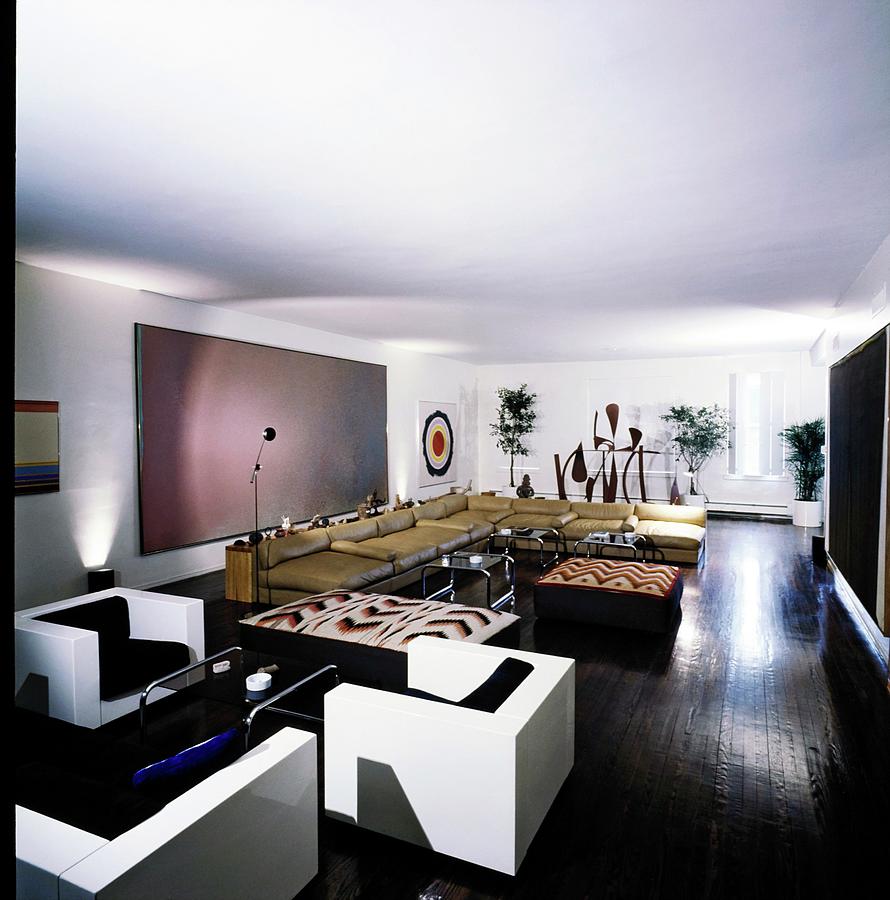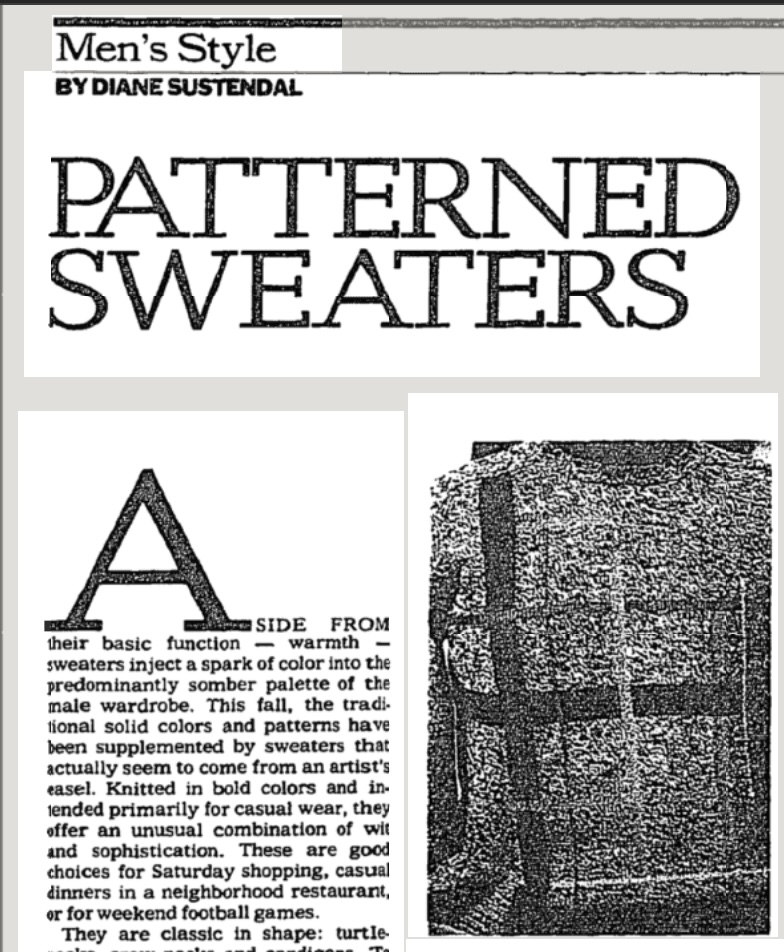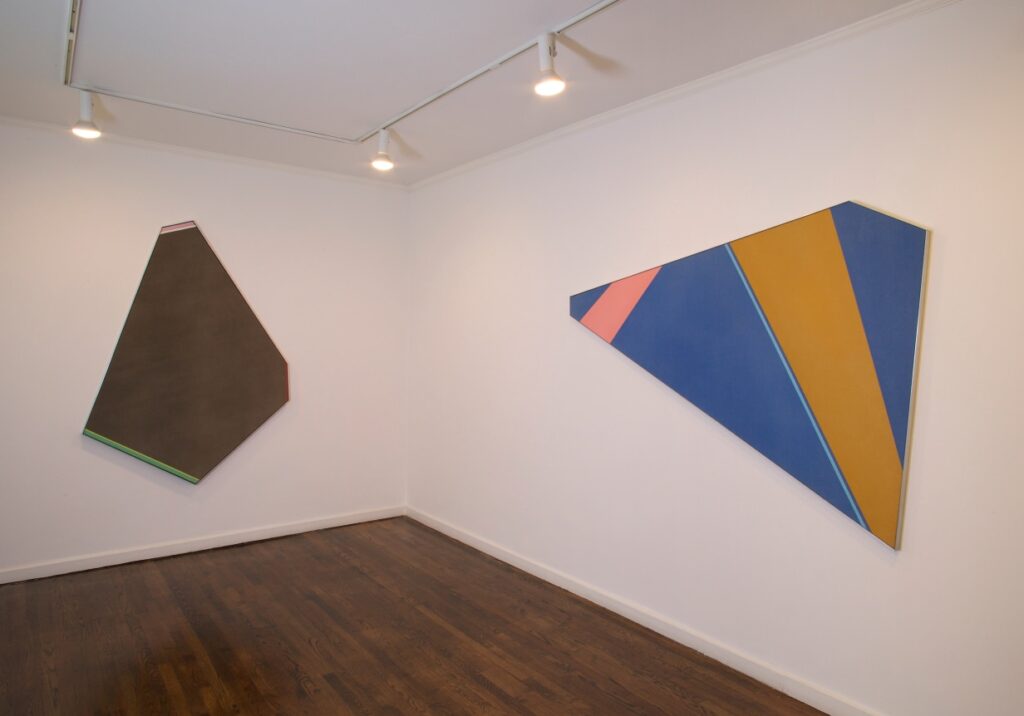
Looking up the details of the c.1972 interior of Kenneth Noland’s Manhattan apartment, photographed for Vogue by Horst—he’s not just for Twombly anymore!—which Condé Nast is monetizing the crap out of, badly, I have found the following:
It was called a loft, but those ceilings feel kind of low. It was designed by Chessy Rayner and Mica Ertegun, whose lighting concepts embody their unfathomably deep hatred of painting. Their main victim, the large spray painting over the sofa, is by Jules Olitski. It’s 1972, so of course there’s also a Morris Louis painting, also uplit by cans on the floor, but it’s really not legible here. Rounding out the Bennington theme, the sculpture is by Anthony Caro. Noland would have been on his third marriage. Cady would have been 16.
But that’s not important now. Because the Wikipedia article section on Kenneth Noland’s influence has one fact, and it is that “In 1984, US menswear designer Alexander Julian incorporated Noland’s designs and coloring in his knitwear.” The citation is a 1984 article from the NYT Magazine about patterned knitwear, which simply states, “Alexander Julian, long an admirer of Kenneth Noland’s work, interpreted the artist’s graphic linear patterns into more than one of his sweaters.”

As this crap screenshot clearly demonstrates, the legacy of Julian, like Noland, a North Carolina native, whose innovations are centered on color and textile, is poorly served by a largely black & white print media landscape. And the vintage clothing market dgaf; 80s/90s is more than close enough to sell to people who weren’t alive in the 1900s.

But scrubbing past the Monet, Klee, and Kandisky references in the woozy jazzy 2006 documentary short made by the Aldrich Museum [?] yields this screenshot of a saxe-playing mannequin in Julian’s house wearing what I think is the 1984 sweater from the Noland namecheck. Actually, no, that is not it, but it is close, and the colors are rather Nolandish. Also, isn’t that Inigo’s father?

Here is a 2015 Castelli show of period Nolands, c. 1976-80, which show his color story at the time. In a 1992 profile about his new spread in Ridgefield, Connecticut (thus the Aldrich) which I could only find via newspapers.com, Julian explains how he got friendly with Noland when they were neighbors somewhere, and Noland made him a “tie” of an offcut edge of painting. [Which, 1984 was also when Andy Warhol and Keith Haring called the trimmed edge of a painting to Sean Lennon as a birthday present a “tie,” according to Haring and his buddy Oswald.]
I feel like this could be resolved, but it will take some primary source intervention. Meanwhile, that 1984 Times article also says Perry Ellis’s entire collection was “a singular salute” to Sonia Delaunay, and I’m sorry, but I was an impressionable child in North Carolina at the time and spent every cent I had on a handknit Perry Ellis sweater that year, with two cables down the front, and it was just burgundy. So this Delaunay connection will have to be unpacked in another post.
[update: Thanks to art historian Alex Grimley, who identifies this tragically lit but otherwise gorgeous Olitski as Lavender Liner (1967), which Noland bought from Emmerich in 1968. Of particular relevance among the other writings on Grimley’s site is a link to his Brooklyn Rail review of a 2023 exhibition at Pace that included Noland’s Plaid paintings.]
